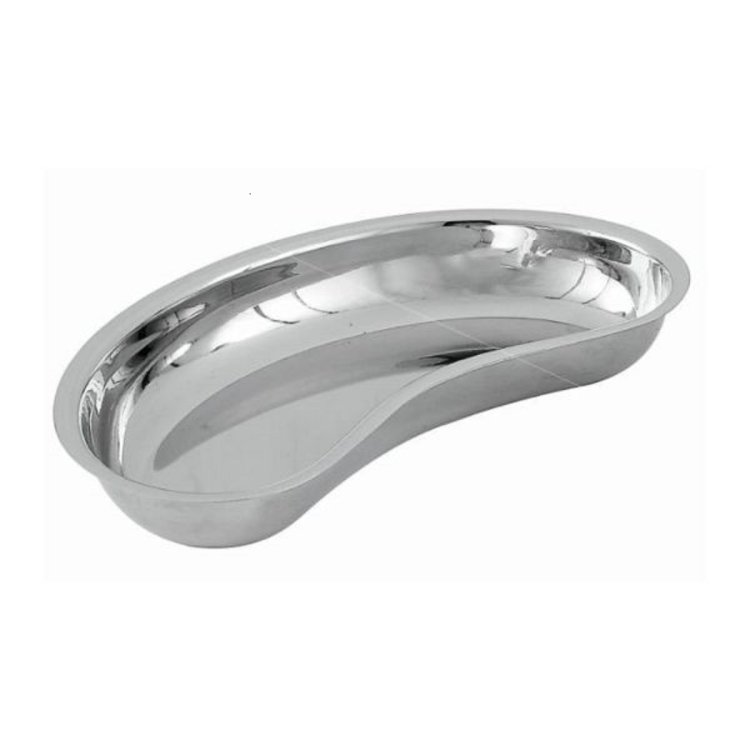Exploring Shallow Type Kidney Trays for Medical Use
This comprehensive guide aims to explore the functionalities, materials, designs, and applications of shallow type kidney trays in the medical field.
Share this Post to earn Money ( Upto ₹100 per 1000 Views )
Shallow type kidney trays are indispensable tools in medical settings, serving various purposes from specimen collection to wound care. This comprehensive guide aims to explore the functionalities, materials, designs, and applications of shallow type kidney trays in the medical field.
Understanding Shallow Type Kidney Trays
Shallow type kidney trays, also known as kidney dishes, are shallow, kidney-shaped containers typically made of stainless steel or plastic. They are designed with a curved edge to prevent spillage and facilitate easy handling. These trays come in various sizes, ranging from small for individual use to larger ones for holding multiple items.
Functionality and Applications
Shallow type kidney trays have versatile applications across different medical procedures and settings. They are commonly used for:
-
Specimen Collection: Healthcare professionals utilize kidney trays to collect various biological specimens such as urine, sputum, and wound exudate. The shallow design allows for easy pouring and transfer of specimens to sample containers for analysis.
-
Wound Care: During wound dressing procedures, kidney trays serve as a convenient vessel for holding sterile dressings, gauze, swabs, and antiseptic solutions. Their shallow depth enables easy access to supplies while minimizing the risk of contamination.
-
Surgical Procedures: In surgical settings, kidney trays are essential for organizing and holding surgical instruments, sutures, and other sterile supplies needed during procedures. They provide a hygienic and easily accessible storage solution within the sterile field.
-
Dental Procedures: Dentists commonly use kidney trays to organize and store dental instruments, cotton rolls, and other materials required for dental examinations and procedures. The shallow design facilitates efficient access to instruments during treatments.
Materials and Construction
Shallow type kidney trays are predominantly manufactured from stainless steel or plastic materials, each offering distinct advantages:
-
Stainless Steel: Stainless steel kidney trays are durable, autoclavable, and resistant to corrosion, making them suitable for repeated sterilization and long-term use. They provide a robust solution for handling sterile instruments and specimens in clinical settings.
-
Plastic: Plastic kidney trays are lightweight, disposable, and cost-effective. They are commonly used in single-use applications or settings where convenience and disposability are prioritized. Plastic trays are available in a variety of colors for easy identification and segregation of contents.
Design Features
Shallow type kidney trays are designed with specific features to enhance their functionality and usability:
-
Curved Edge: The curved edge of kidney trays prevents spillage and facilitates easy pouring and transfer of contents without dripping. This design feature minimizes wastage and maintains a clean working environment.
-
Smooth Surface: The smooth surface of kidney trays allows for easy cleaning and sterilization, ensuring optimal hygiene and infection control standards are maintained in healthcare settings.
-
Embossed Measurement Markings: Some kidney trays are equipped with embossed measurement markings along the inner surface, enabling precise volume measurements of collected specimens or fluids.
Considerations for Use
When selecting and utilizing shallow type kidney trays, several considerations should be taken into account:
-
Sterilization: Ensure that stainless steel trays are properly sterilized through autoclaving or other validated sterilization methods before each use to prevent cross-contamination.
-
Compatibility: Choose trays that are compatible with the specific procedures and requirements of the healthcare setting, considering factors such as size, material, and design features.
-
Storage and Maintenance: Proper storage and maintenance practices should be followed to prolong the lifespan of kidney trays and ensure their effectiveness. Plastic trays should be stored in a clean, dry environment away from direct sunlight to prevent degradation. Chaplet north america
Conclusion
Shallow type kidney trays play a crucial role in various medical procedures, offering a versatile and hygienic solution for specimen collection, wound care, surgical procedures, and dental treatments. With their durable construction, ergonomic design, and diverse applications, these trays continue to be essential tools in healthcare settings worldwide. By understanding their functionalities, materials, designs, and applications, healthcare professionals can make informed decisions regarding the selection and utilization of shallow type kidney trays to enhance patient care and safety.








